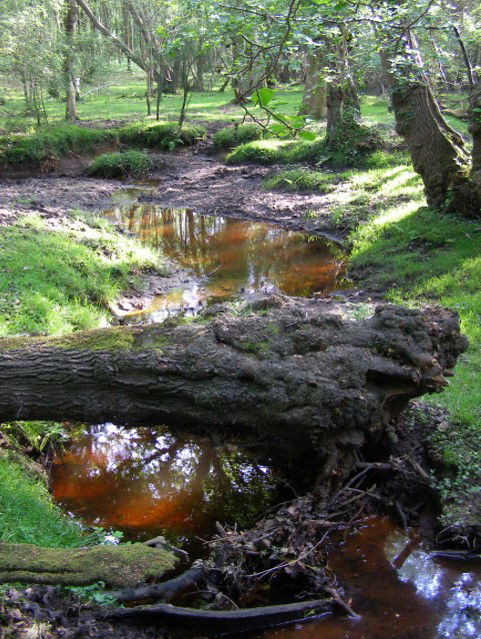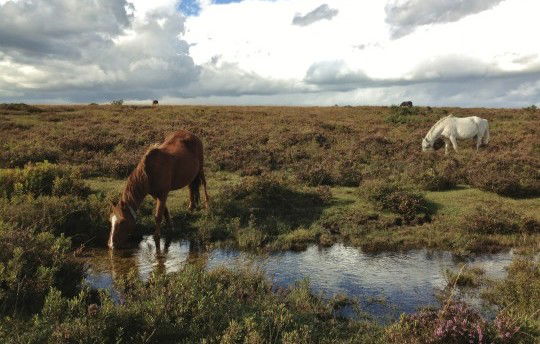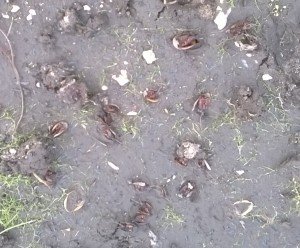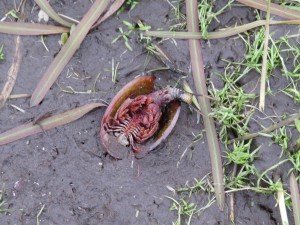The land of the Tadpole Shrimp
20th October 2015
The New Forest is a truly amazing landscape. There are few other places in the country providing such an outstanding diversity and quality of habitats for freshwater wildlife, and even fewer where you can find the Tadpole Shrimp

Freshwater Habitat Trust has been working closely with local organisations, experts and communities who are keen to understand and protect this special landscape. We have developed the first water management plan to take account of all freshwaters, big and small, including the near natural headwater streams rising from mires at the centre of the Forest, and the many hundreds of pristine ponds dotted across the heaths and woodlands. The emphasis is on keeping waters truly unimpacted by pollution, protecting the best sites which are home to some of Britain’s rarest plants or animals, and stop exceptional places fading away to mediocrity.
Flagship Ponds are the very best of the best ponds you can find in the UK. They are the top 1% of Priority Ponds described by the UK Pond HAP, and just a tiny fraction of the total pond resource. We currently have information on just under 200 Flagship sites, each of which is home to rare plants or animals that cannot survive in the rest of the countryside. Whether it’s outright destruction of sites, or degradation of sites from water pollution, intensive agriculture, development, or inappropriate management, most sites just aren’t good enough for them anymore. Thanks to Heritage Lottery Funding, the People, Ponds and Water project has adopted 70 Flagship sites where we plan to undertake monitoring and management work with local communities to ensure they remain in good condition for the future, and it’s no surprise that there are four such Flagship sites in the New Forest.
These four New Forest Flagship Pond sites are home to a whopping 13 priority pond species, more than any of the other Flagship site we have identified in England and Wales. This includes creatures like the Tadpole Shrimp (Triops cancriformis) one of the rarest pond species in the UK. Didn’t I say the New Forest is amazing?
 A Tadpole Shrimp from the New Forest pond, captured on camera by Neil Phillips of UK Wildlife
A Tadpole Shrimp from the New Forest pond, captured on camera by Neil Phillips of UK Wildlife
I’m not sure there are enough superlatives to adequately describe the Tadpole Shrimp. Suffice to say, here at Freshwater Habitats Trust, we love it. It’s considered to be one of the oldest extant species on Earth. Fossils of almost identical creatures date back 200 million years! Not only is it capable of surviving long drought periods, it actually needs ponds to dry out in between years in order to trigger hatching. Populations of predators and competitors can’t build up in temporary ponds the way they can in permanent ponds, and the fresh rainwater and turnover of nutrients in the traditionally grazed sites where they occur make just the right cocktail for them to thrive. To survive the droughts, Tadpole Shrimps lay eggs that can lie dormant in the sediment for years until the right conditions return – usually a warm, wet spell.
 Low intensity grazing is a key factor in the maintenance of this pond and its special residents (c)Ian Ralphs
Low intensity grazing is a key factor in the maintenance of this pond and its special residents (c)Ian Ralphs
Tadpole shrimps are known from just two sites in the UK: Caerlaverock on the Solway Firth, and the New Forest. They are a protected species and require a licence from Natural England in order to net them, handle them or remove them or their eggs from the site. The Scottish site is in a nature reserve and well looked after by the Wildfowl & Wetlands Trust. The primary New Forest site is managed by the Forestry Commission within the New Forest National Park and monitored by Kirsty, a local resident who visits the pond every week to check how things how going. She tracks water levels, measures water chemistry and temperature, looks for Tadpole Shrimps and Fairy Shrimps (yes, Fairy Shrimps too – it’s an amazing place), and raises the alarm if she spots anything untoward, keeping a particularly close eye on any signs of pollution, and invasive non native plants like New Zealand Pigmyweed Crassula helmsii. Kirsty is supported by New Forest pond expert Dr Naomi Ewald, backed by Francesca Dunn, our regional officer for the Flagship Pond project. Naomi and Francesca’s knowledge and enthusiasm is really important to Kirsty, putting her work in perspective and helping her feel part of a network.
Thanks to the Heritage Lottery Fund, the Flagship Pond project brings support and resources to people caring for these special places. At some sites that means undertaking detailed surveys or setting up a monitoring programme, whilst at others it means doing some essential management work, or simply raising awareness of a site so that people know to take care of it. At the Tadpole Shrimp sites it means trying to better understand the pond and the species it supports, looking for tell tale signs which could indicate there is a problem. The information that Kirsty collects is essential to our understanding and conservation of both the site and the species.
 Kirsty taking some water chemistry measurements in the pond.
Kirsty taking some water chemistry measurements in the pond.
Kirsty has been watching the pond for several years, and was beside herself with joy when she spotted the Tadpole Shrimps this summer for the first time. Although people have recorded Tadpole Shrimp at the pond over many years this was on a very ad-hoc basis. With Kirsty now on the case, we are getting some really good continuous data on the pond. After driving past the pond every day for the past 25 years, it’s only recently that she realised just how special it is, and is perhaps making herself a little unpopular by wishing for wet summers.
The idyllic conditions also gave wildlife photographer Neil Phillips the opportunity to film the shrimps. Here is possibly the first ever footage of wild UK Tadpole Shrimps…
Of course, after the rain came the sun, and the pond became a Tadpole Shrimp graveyard. It looks like a tragedy but with their rapid life cycle they will have laid more than enough eggs to make sure this population persists for many decades to come.
Long live the Tadpole Shrimp!
Want to know more or get involved?
- Read an article about the ecology and conservation of the Tadpole Shrimp in the UK in British Wildlife (June 2011) (a great publication worth subscribing to)
- Find out more about the Flagship Ponds project and how we are helping people care for the best ponds in the country
- Join the PondNet team to survey for rare species and monitor ponds near you
- Support our work protecting freshwater wildlife
- Join our mailing list to get articles like this direct to your inbox



